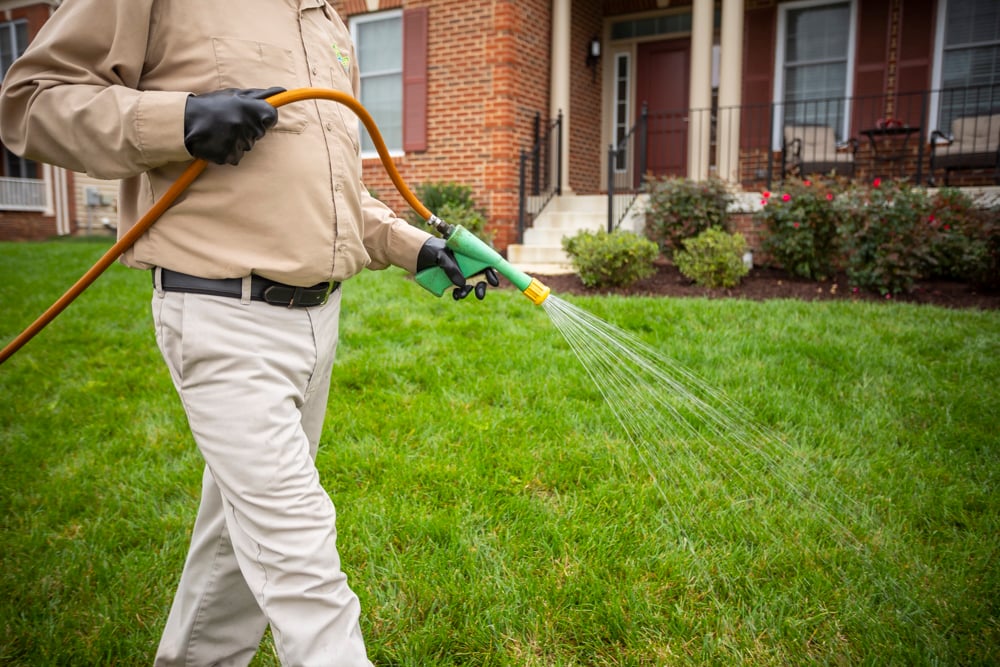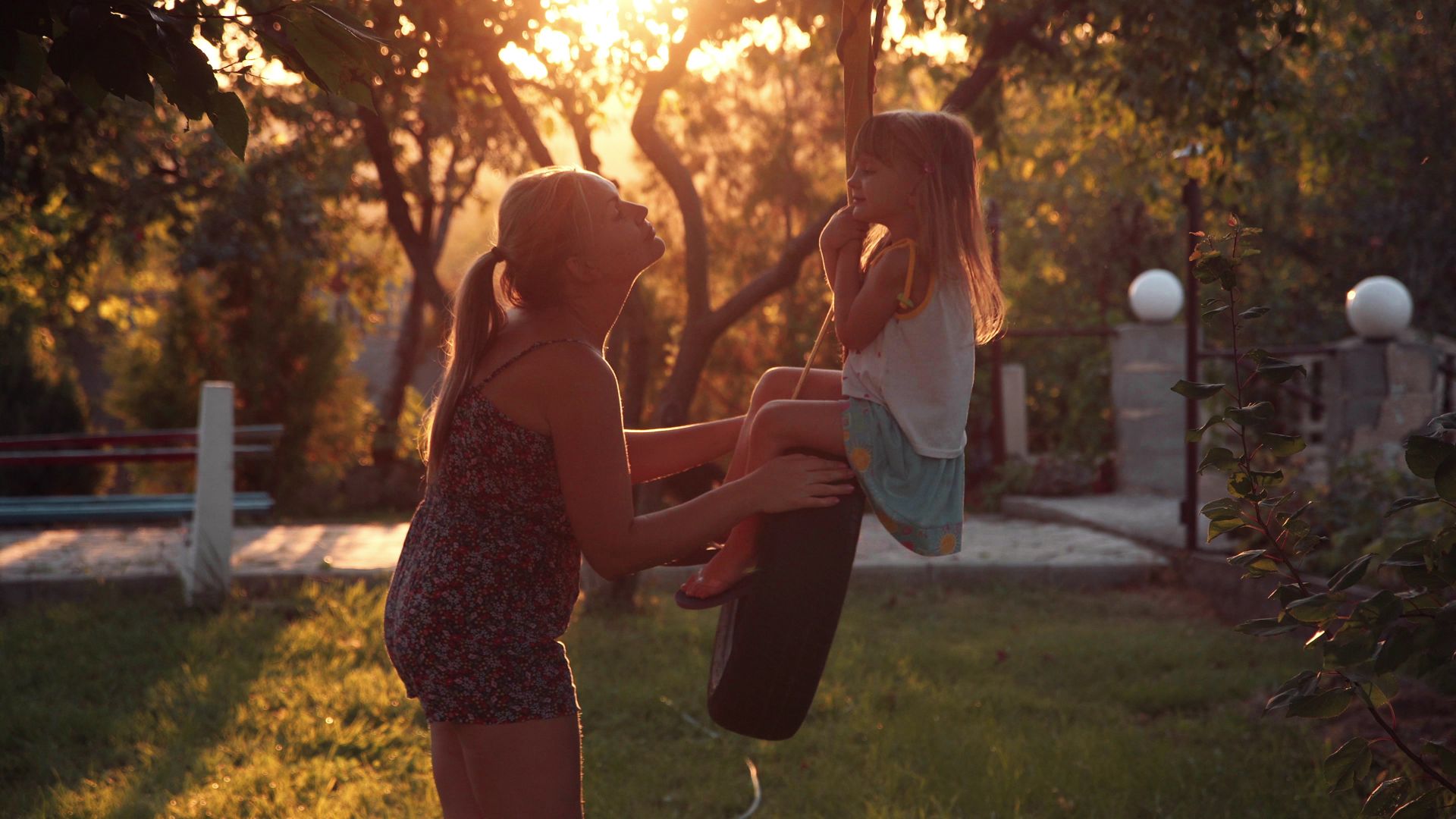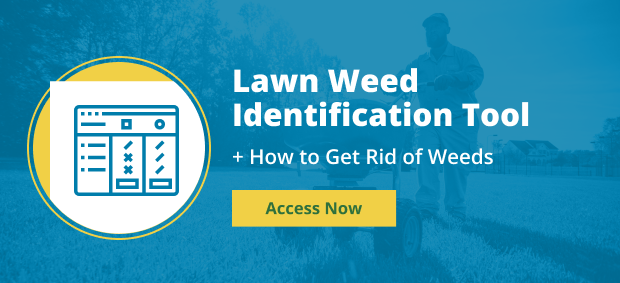6 Facts About Crabgrass Control Every Maryland Homeowner Should Know
Having a crabgrass moment?
You know what we’re talking about. Maybe you’re commiserating with a neighbor in the driveway or talking about how this nasty weed( that )seems to take over lawns with such ease. Maybe you’re even daydreaming of killing crabgrass in numerous ways ranging from normal to completely outlandish.
You’re not alone. Crabgrass is enemy No. 1 when it comes to lawn villains.
But there are some crabgrass control tactics you can use that can make you the neighborhood superhero.
Use This Lawn Weed ID Tool to Spot Weeds in Your Lawn
Let’s get started.
Killing Crabgrass Starts With Knowing the Enemy
Crabgrass is a pervasive weed, and it’s only thought is complete dominance. In fact, it’s probably plotting to take over every lawn on your block right now.
 It’s rough, pointy and a lighter green than your normal grass, growing in clumps.
It’s rough, pointy and a lighter green than your normal grass, growing in clumps.
Probably the worst thing about this weed is its ability to spread … and spread fast. Each crabgrass plant produces as many as 150,000 seeds in one growing season.
And once you have it, it can outcompete your good grass in a heartbeat and leave you with dead spots by the end of the year.
Don’t want to deal with this weed’s worst characteristics? Let’s talk about the best methods for crabgrass control so you don’t have to.
1. Crabgrass Control: Don’t Mow Too Short
While your urge may be to mow low so that you can temporarily hide that nasty crabgrass from sight, we assure you that is not the best crabgrass prevention strategy.
A taller, thicker lawn actually blocks the sun’s light and heat that might hit the crabgrass seeds and cause them to germinate, while also drying out regular grass. Mowing to a 3.5- to 4-inch height is preferable. 
Crabgrass isn’t found in the shade. So when you provide grass with the best conditions to retain moisture and cooler soil temperatures, you keep crabgrass out.
2. Crabgrass Control: Water Right
In the story of Goldilocks and the Three Bears, a bed that was too hard or too soft wasn’t “just right.” Similarly, soil that is too wet or too dry won’t be “just right,” and can encourage weed growth, crabgrass among them. Your Maryland lawn needs a minimum of 1½ inches of water weekly, depending on soil type, wind, and rainfall amounts.
A professionally installed irrigation system can be zoned and timed just right for your lawn to ensure you’re watering adequately.
If you don’t have an irrigation system, sprinklers and timers can still do the trick. Just remember not to neglect watering entirely if your goal is to control crabgrass.
3. Crabgrass Control: Preventive Treatments
Prevention is the best strategy for crabgrass control.
 Crabgrass seeds germinate when soil temperatures reach 56 to 58 degrees Fahrenheit, which comes sooner after a mild winter.
Crabgrass seeds germinate when soil temperatures reach 56 to 58 degrees Fahrenheit, which comes sooner after a mild winter.
If crabgrass preventer isn’t down by the end of March, you may have missed the prime window for crabgrass control. This year, that may come one week earlier due to weather conditions in Central and Southern Maryland.
4. Crabgrass Control: Spot Treatments in Summer
If you’re still seeing some crabgrass break through after preventive treatments, or the preventive treatments didn’t work as effectively on a thinner area of the lawn, the next step for killing crabgrass is spot treatments.
We spot treat crabgrass in your lawn with a post-emergent herbicide when small plants break through.
5. Crabgrass Control: Thicken That Lawn
Crabgrass is a very destructive weed that will outcompete good grass when given the opportunity.
The trick to crabgrass control: Not giving it the chance to sneak into your healthy lawn.
 A thick, healthy lawn results from proper mowing and watering like we discussed above, but also through regular and proper fertilization.
A thick, healthy lawn results from proper mowing and watering like we discussed above, but also through regular and proper fertilization.
Annual aeration and overseeding each fall can also increase lawn density, making sure crabgrass doesn’t have as much of a fighting chance to emerge.
Crabgrass seeds are everywhere, but they need light to germinate. So a thick lawn is your best defense for reducing or eliminating crabgrass.
6. Crabgrass Control: Choose a Lawn Care Company You Can Trust
Crabgrass seeds don’t take vacations or time off or quit the job they’re so great at doing. Within the right conditions, crabgrass seeds grasp every opportunity to thrive.
 Planning ahead is the best way to combat crabgrass before it takes a firm hold on your lawn. You want to hire a Central and Southern Maryland lawn care service provider that knows how to battle crabgrass and can give you the right knowledge on proper lawn care, such as mowing, watering, and fertilization, to keep grass thick and healthy. If you have a thin lawn, a lawn care company that can offer the addition of aeration and overseeding where necessary can beef up lawn density.
Planning ahead is the best way to combat crabgrass before it takes a firm hold on your lawn. You want to hire a Central and Southern Maryland lawn care service provider that knows how to battle crabgrass and can give you the right knowledge on proper lawn care, such as mowing, watering, and fertilization, to keep grass thick and healthy. If you have a thin lawn, a lawn care company that can offer the addition of aeration and overseeding where necessary can beef up lawn density.
On top of that, your lawn care technician must know the right timing for crabgrass preventer applications to keep any seeds that do reach the sunlight from emerging. And for those few that do get through, your lawn care expert can target spot treatments to seal the deal.
Ready to Check Killing Crabgrass Off Of Your To-Do List? Trust Natural Green to Help You Defeat the Enemy
Your family bocce ball tournament or baseball game doesn’t need any distractions. You have better things to do than worry about your lawn.
Killing crabgrass is a priority, but you don’t want this job to take over your life. You want to make the right choice so that you can win the battle against crabgrass. That’s what we want, too.
We want you to enjoy your yard. Give us a call today and we’ll bring our proven crabgrass control experience and create a custom plan for your Central and Southern Maryland lawn. Get started today with a free quote.
Having a crabgrass moment?
You know what we’re talking about. Maybe you’re commiserating with a neighbor in the driveway or talking about how this nasty weed( that )seems to take over lawns with such ease. Maybe you’re even daydreaming of killing crabgrass in numerous ways ranging from normal to completely outlandish.
You’re not alone. Crabgrass is enemy No. 1 when it comes to lawn villains.
But there are some crabgrass control tactics you can use that can make you the neighborhood superhero.
Use This Lawn Weed ID Tool to Spot Weeds in Your Lawn
Let’s get started.
Killing Crabgrass Starts With Knowing the Enemy
Crabgrass is a pervasive weed, and it’s only thought is complete dominance. In fact, it’s probably plotting to take over every lawn on your block right now.
 It’s rough, pointy and a lighter green than your normal grass, growing in clumps.
It’s rough, pointy and a lighter green than your normal grass, growing in clumps.
Probably the worst thing about this weed is its ability to spread … and spread fast. Each crabgrass plant produces as many as 150,000 seeds in one growing season.
And once you have it, it can outcompete your good grass in a heartbeat and leave you with dead spots by the end of the year.
Don’t want to deal with this weed’s worst characteristics? Let’s talk about the best methods for crabgrass control so you don’t have to.
1. Crabgrass Control: Don’t Mow Too Short
While your urge may be to mow low so that you can temporarily hide that nasty crabgrass from sight, we assure you that is not the best crabgrass prevention strategy.
A taller, thicker lawn actually blocks the sun’s light and heat that might hit the crabgrass seeds and cause them to germinate, while also drying out regular grass. Mowing to a 3.5- to 4-inch height is preferable. 
Crabgrass isn’t found in the shade. So when you provide grass with the best conditions to retain moisture and cooler soil temperatures, you keep crabgrass out.
2. Crabgrass Control: Water Right
In the story of Goldilocks and the Three Bears, a bed that was too hard or too soft wasn’t “just right.” Similarly, soil that is too wet or too dry won’t be “just right,” and can encourage weed growth, crabgrass among them. Your Maryland lawn needs a minimum of 1½ inches of water weekly, depending on soil type, wind, and rainfall amounts.
A professionally installed irrigation system can be zoned and timed just right for your lawn to ensure you’re watering adequately.
If you don’t have an irrigation system, sprinklers and timers can still do the trick. Just remember not to neglect watering entirely if your goal is to control crabgrass.
3. Crabgrass Control: Preventive Treatments
Prevention is the best strategy for crabgrass control.
 Crabgrass seeds germinate when soil temperatures reach 56 to 58 degrees Fahrenheit, which comes sooner after a mild winter.
Crabgrass seeds germinate when soil temperatures reach 56 to 58 degrees Fahrenheit, which comes sooner after a mild winter.
If crabgrass preventer isn’t down by the end of March, you may have missed the prime window for crabgrass control. This year, that may come one week earlier due to weather conditions in Central and Southern Maryland.
4. Crabgrass Control: Spot Treatments in Summer
If you’re still seeing some crabgrass break through after preventive treatments, or the preventive treatments didn’t work as effectively on a thinner area of the lawn, the next step for killing crabgrass is spot treatments.
We spot treat crabgrass in your lawn with a post-emergent herbicide when small plants break through.
5. Crabgrass Control: Thicken That Lawn
Crabgrass is a very destructive weed that will outcompete good grass when given the opportunity.
The trick to crabgrass control: Not giving it the chance to sneak into your healthy lawn.
 A thick, healthy lawn results from proper mowing and watering like we discussed above, but also through regular and proper fertilization.
A thick, healthy lawn results from proper mowing and watering like we discussed above, but also through regular and proper fertilization.
Annual aeration and overseeding each fall can also increase lawn density, making sure crabgrass doesn’t have as much of a fighting chance to emerge.
Crabgrass seeds are everywhere, but they need light to germinate. So a thick lawn is your best defense for reducing or eliminating crabgrass.
6. Crabgrass Control: Choose a Lawn Care Company You Can Trust
Crabgrass seeds don’t take vacations or time off or quit the job they’re so great at doing. Within the right conditions, crabgrass seeds grasp every opportunity to thrive.
 Planning ahead is the best way to combat crabgrass before it takes a firm hold on your lawn. You want to hire a Central and Southern Maryland lawn care service provider that knows how to battle crabgrass and can give you the right knowledge on proper lawn care, such as mowing, watering, and fertilization, to keep grass thick and healthy. If you have a thin lawn, a lawn care company that can offer the addition of aeration and overseeding where necessary can beef up lawn density.
Planning ahead is the best way to combat crabgrass before it takes a firm hold on your lawn. You want to hire a Central and Southern Maryland lawn care service provider that knows how to battle crabgrass and can give you the right knowledge on proper lawn care, such as mowing, watering, and fertilization, to keep grass thick and healthy. If you have a thin lawn, a lawn care company that can offer the addition of aeration and overseeding where necessary can beef up lawn density.
On top of that, your lawn care technician must know the right timing for crabgrass preventer applications to keep any seeds that do reach the sunlight from emerging. And for those few that do get through, your lawn care expert can target spot treatments to seal the deal.
Ready to Check Killing Crabgrass Off Of Your To-Do List? Trust Natural Green to Help You Defeat the Enemy
Your family bocce ball tournament or baseball game doesn’t need any distractions. You have better things to do than worry about your lawn.
Killing crabgrass is a priority, but you don’t want this job to take over your life. You want to make the right choice so that you can win the battle against crabgrass. That’s what we want, too.
We want you to enjoy your yard. Give us a call today and we’ll bring our proven crabgrass control experience and create a custom plan for your Central and Southern Maryland lawn. Get started today with a free quote.


